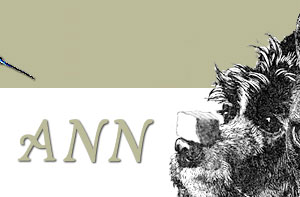 Researchers have been 'nosing around' for new ways to help alter unwanted behavior patterns in companion and farm animals, and found that the answer was right under their nose. Researchers have been 'nosing around' for new ways to help alter unwanted behavior patterns in companion and farm animals, and found that the answer was right under their nose.
Animal behaviorists have started to have a larger variety of options to influence unwanted pet behaviors by using synthetic pheromones. Pheromones are chemical substances produced by an animal to serve as a stimulus for behavioral responses in others of the same species. Pheromones are secreted by glands (including anal sacs) and are found in saliva, feces, and urine. Their purpose is to induce specific reactions (behavioral and emotional), including sexual behaviors, aggression, fear-related behaviors, and avoidance reactions.
Olfactory information (smell) plays a much more important role in some species than we may imagine; for cats it is extremely important. If you have more than one cat you may have noticed that if one cat goes to the veterinary office, the cat who stayed home may hiss and swat at the returning cat. This is because the cat who left now smells different; it looks the same, but smell is more important than visual cues in this instance.
When cats scratch on a surface, they are not only 'sharpening their claws,' they are leaving their scent. Their scent is a cue for them to return periodically and scratch at the same spot, leaving more of their scent.
The vomeronasal organ (also called Jacobson's organ) plays an essential role in olfactory communication in all species. Located in the roof of the mouth, this organ consists of two, fluid filled sacs that connect to the nasal cavity via fine ducts. To facilitate the perception of pheromones, especially sexual odors, most species conduct a behavioral process called 'Flehmen' whereby they lift their upper lip and open their mouths to increase the opening of the ducts connecting the Jacobson's organ with the nasal cavity.
Research has focused on different applications of synthetic pheromones that may affect behavior of various species, including insects, farm animals, cats, dogs, and even humans. Examples include:
- The application of sexual attractants on insect traps to control pests
- The use of pheromones to facilitate artificial insemination in pigs, since the compounds contained in the saliva of boars induce a reflex in sows to stand still
In cats, a compound is available for the treatment of unwanted urine marking behavior. This substance, found in the commercial product 'Feliway,' is a synthetic analogue of a pheromone secreted by the facial glands of cats. This pheromone tends to have a soothing effect. (You may have seen your cat rubbing her chin on furniture or a doorway; she is rubbing this pheromone onto that surface.) If 'Feliway' is applied in households, the frequency of urine marking can be reduced significantly. Additionally, this substance has shown a calming effect if applied in feline transport carriers or in new or unknown environments into which the cat has been introduced.
© 2000 Drs. Foster and Smith, Inc.
Reprinted as a courtesy and with permission from
PetEducation.com http://www.PetEducation.com
On-line store at http://www.DrsFosterSmith.com
Free pet supply catalog: 1-800-323-4208 |


